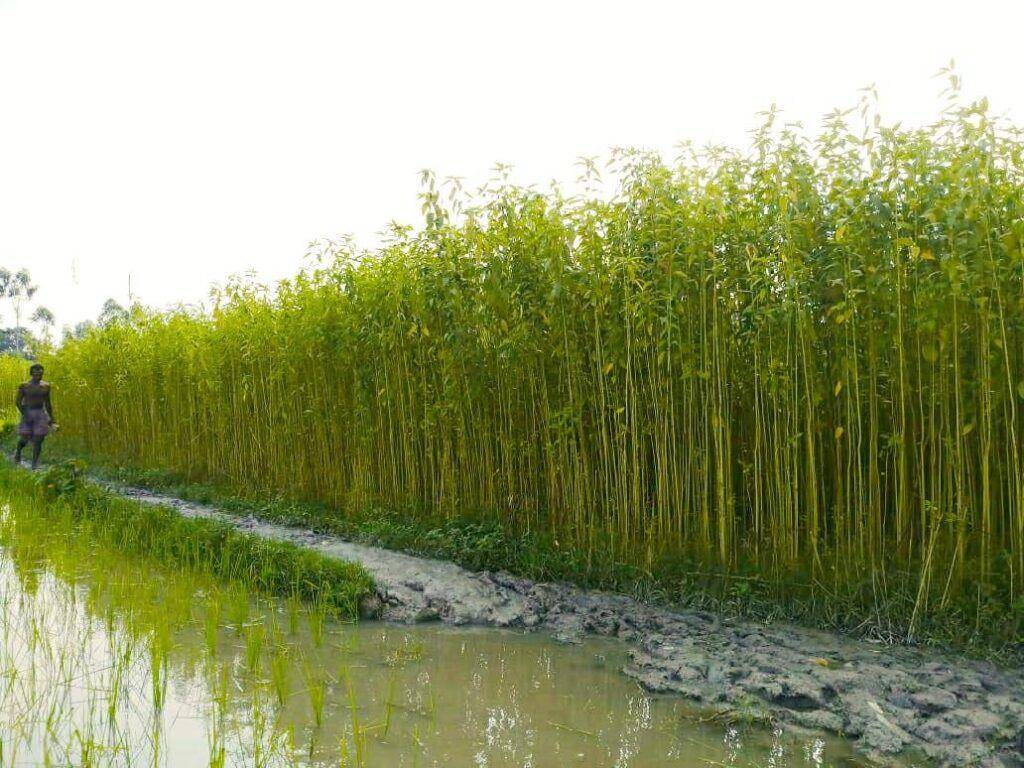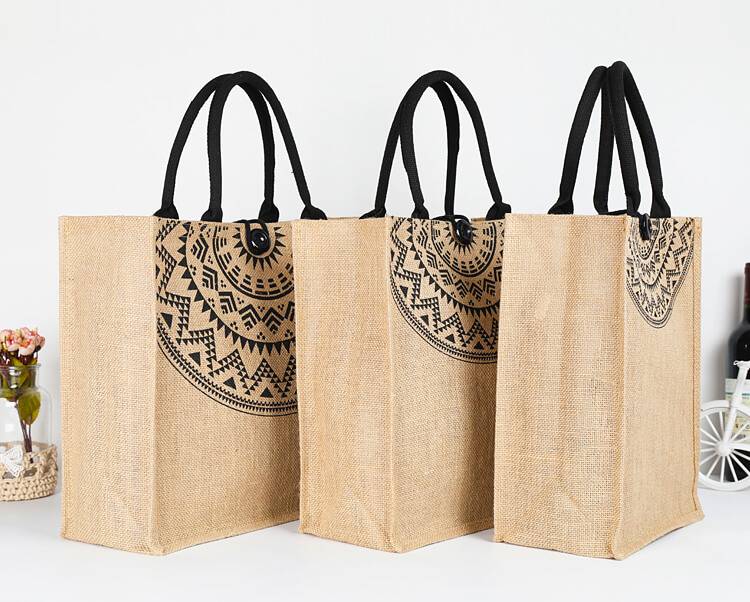
Jute is one of the most important cash crops of eastern India. It is the crop of hot and humid climates and is exported as goods and as a raw fiber. The crop is mainly grown in West Bengal, Assam, Northern Bihar, south-eastern Orissa, Tripura and eastern Uttar Pradesh. Jute is rightly called the second most important fiber crop in India.

Uses of Jute:
Jute is used for manufacturing a wide variety of articles like gunny bags, ropes, hessian, carpets, rugs and clothes, tarpaulins, upholstery, strings, carpets and decoration pieces.
However, this fibre is chiefly used for manufacturing hessian, sacking and carpet backing. The jute sticks are widely used as fuel & also for making gunpowder, and charcoal, as a raw material for coarser paper. Interestingly, resin-bonded pressed jute sticks to make durable hardboard.
Why Jute is it in great demand?
After cotton, comes the demand for jute. Jute is in great demand due to the cheapness, softness, strength, length, lustre and uniformity of its fibre. These great qualities make this fibre popular in the market as well.
How Jute Cultivation is done?
The cultivation of jute requires the right climate, proper land, soil, labor, and right farming techniques.
Climate for Jute Cultivation
Jute requires a hot and humid climate, a temperature fluctuation between 24o C and 37o C. However, the optimum is around 34 o C. There should not be constant rain or waterlogged conditions which are harmful to jute cultivation. In the seedling stage, water-logging is not advised. Alternate sunshine and rainy days are most helpful to jute growth.

Soil Required for Jute Cultivation
The best soil recommended for the cultivation of jute is new grey alluvial soil of good depth, receiving silt from the annual floods. Jute is largely grown in sandy loams and clay loams. Varying clays are unsuitable for jute cultivation. You can note that the optimum pH range is around 6.4 for the cultivation of jute.
In other words, jute requires a clean, clod-free field with a fine tilth. The land is ploughed, cross ploughed, & planked many times. All weeds must be thoroughly removed.
Best Months for Jute Cultivation and Processing of Jute:
Jute is generally sown in February on lowlands & in March-May on uplands. The jute crop takes around 8 to 10 months to mature. However, different varieties take different time to mature. The harvesting period generally starts in July and continues till October.
Processing of Jute Cultivation:
The jute plants are cut to the ground and tied into bundles. After that, sheaves of jute stocks are immersed in floodwater or ponds or stagnant water for about 2 - 3 weeks for retting. The high temperature of the water is advised which quickens the process of retting. Once retting is done, the bark is peeled from the plant & fibre is removed.
Then comes stripping, rinsing, washing and cleaning. After that, the fibre is dried in the sun and pressed into bales. Remember all this process has to be done by human hand. Thus, the availability of more labour at cheap rates is very important. But the interesting part is there is no labour shortage as jute is cultivated in areas of high population density.
Commercial or Hybrid Varieties of Jute
-
Olitorius JRO 878, JRO 524, and JRO 7835
-
Capsularis JRC 7447, JRC 212 and JRC 321
State-wise varieties of Jute
1. Assam
AAUOJ-1 (Tarun), JBO-2003H (Ira), JRO-204 (Suren),
S-19 (Subala), JRO-8432 (Shakti), CO-58 (Sourav), JBO-1 (Sudhangshu)
JRC-698, JRC-80, JBC-5 (Arpita), RRPS-27-C-3 (Monalisa)
2. Bihar
JBO-2003H (Ira), JRO-204 (Suren), S-19 (Subala), JRO-8432 (Shakti), JRO-128 (Surya), JRO-66 (Golden Jubilee Tossa), CO-58 (Sourav), JBO-1 (Sudhangshu), JRC-698, JBC-5 (Arpita), RRPS-27-C-3 (Monalisa)
3. Meghalaya
JRO-204 (Suren), S-19 (Subala), JRO-8432 (Shakti), CO-58 (Sourav), JBO-1 (Sudhangshu), JBC-5 (Arpita)
4. Nagaland
AAUOJ-1 (Tarun), JBO-2003H (Ira), JRO-204 (Suren), S-19 (Subala), JRO-8432 (Shakti), CO-58 (Sourav), JBO-1 (Sudhangshu), JBC-5 (Arpita)
5. Orissa
JBO-2003H (Ira), JRO-204 (Suren), S-19 (Subala), JRO-8432 (Shakti), JRO-128 (Surya), JRO-66 (Golden Jubilee Tossa), CO-58 (Sourav), JBO-1 (Sudhangshu), JBC-5 (Arpita), RRPS-27-C-3 (Monalisa)
6. Tripura
AAUOJ-1 (Tarun), JBO-2003H (Ira), JRO-204 (Suren), S-19 (Subala), JRO-8432 (Shakti), CO-58 (Sourav), JBO-1 (Sudhangshu), JBC-5 (Arpita)
7. Uttar Pradesh
JBO-2003H (Ira), JRO-204 (Suren), S-19 (Subala), JRO-8432 (Shakti), JRO-128 (Surya), JRO-66 (Golden Jubilee Tossa), JRC-80, CO-58 (Sourav), JBO-1 (Sudhangshu), JBC-5 (Arpita), NDC 2008 (Ankit)
8. West Bengal
JBO-2003H (Ira), JRO-204 (Suren), S-19 (Subala), JRO-8432 (Shakti), JRO-128 (Surya), JRO-66 (Golden Jubilee Tossa), JRC-80, JRC-698, CO-58 (Sourav), JBO-1 (Sudhangshu), JBC-5 (Arpita), RRPS-27-C-3 (Monalisa)
Click Here to know the complete jute varieties
Top Jute Companies in India are as follows:
-
Lovson Exports
-
Jaikishan Dass Mall Jute Products (P) Limited
-
Eco Jute Private Limited
-
Boom Buying Private Limited
-
Anand Jute Industries
















